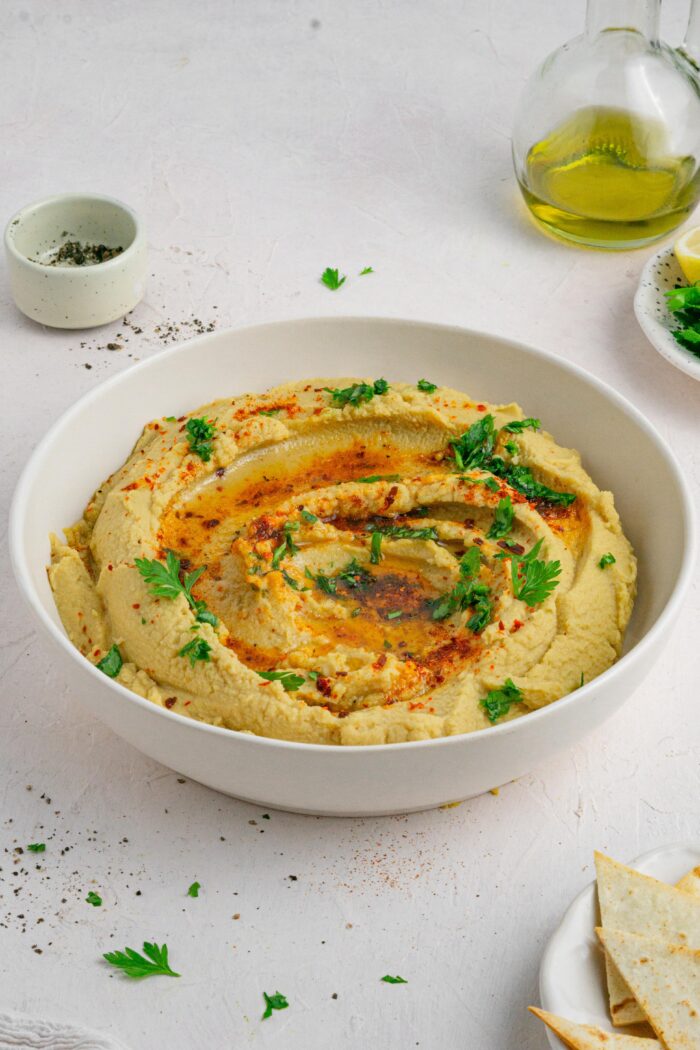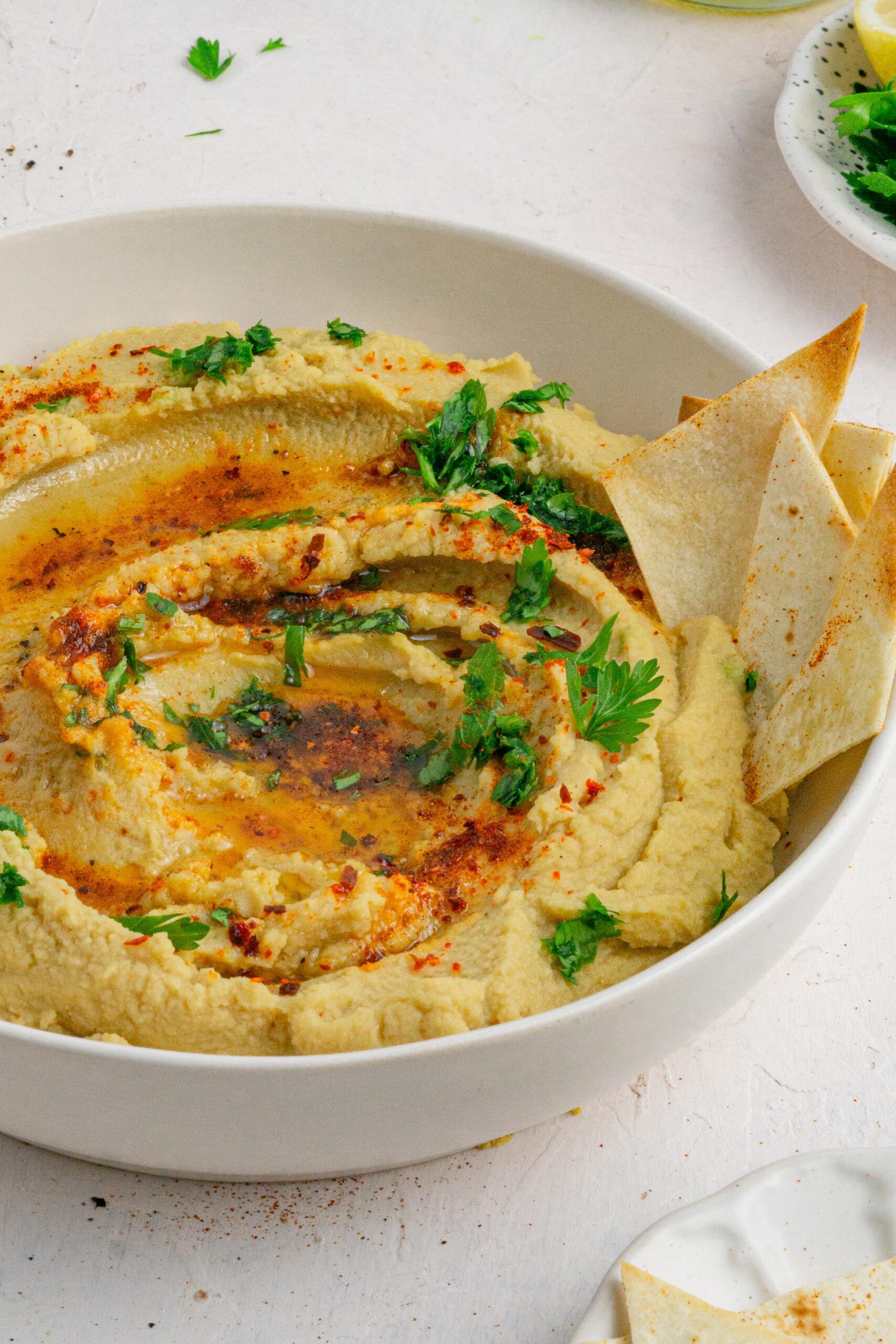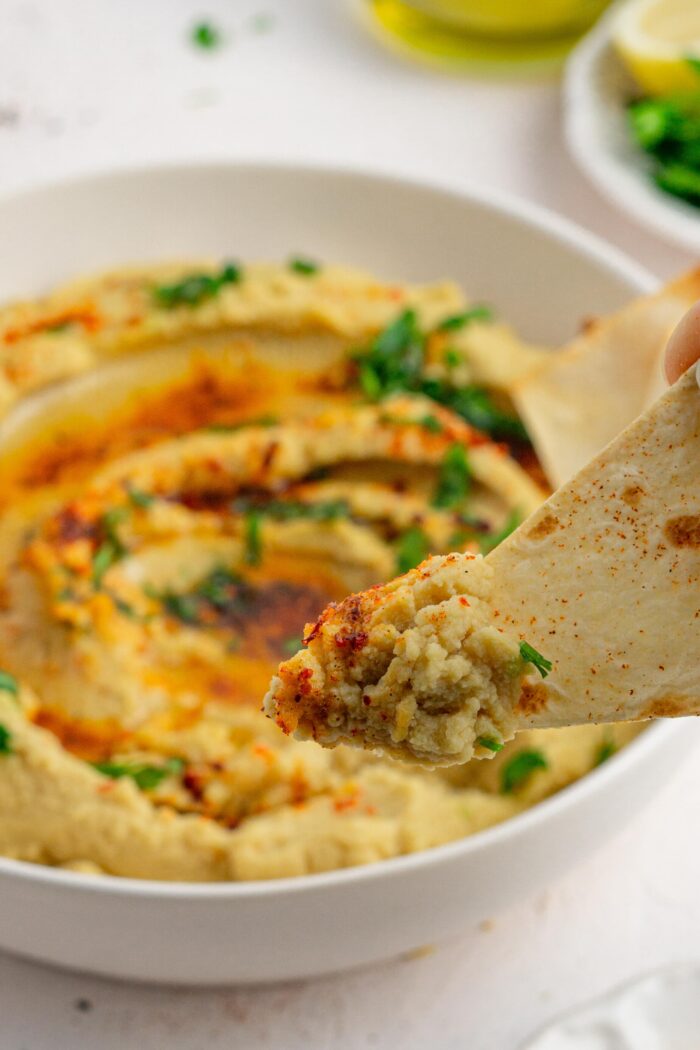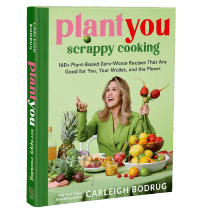Red Lentil Hummus
I’m about to blow your mind with this easy red lentil hummus recipe. It’s a brilliant alternative to traditional chickpea dip, and the color alone is worth it! Plus, it takes barely any time to make.

One of the common issues that stops people from committing to a plant-based diet is a dislike for a certain ingredient. Whether it’s due to taste. texture, or appearance, I totally get it.
This is why I am so keen on providing alternatives with a lot of my recipes, and coming up with fun twists on classic dishes. For instance, this red lentil hummus is an awesome stand-alone dip, but it also works for those who don’t like chickpeas.
The upcoming Scrappy Cookbook has plenty of recipes that feature creative use of ingredients or help you raid your kitchen. With 150+ delicious vegan recipes aimed at reducing food waste, there is something for every taste and occasion.
PREORDER NOW and gain instant access to a bundle of digital freebies WORTH OVER $200. These extras will help you organize your kitchen and pantry, run a zero-waste home, as well as providing you with a healthy vegan menu and introduction to meal prep.

Why You’ll Love This Recipe
- Dry red lentils are cheaper than the same quantity of canned chickpeas. Unlike dry beans and chickpeas, split red lentils are much faster to cook, making them a great alternative for a hummus dip.
- Did I mention the color? Without any unnecessary additives, this red lentil dip is a beautiful golden color that will brighten any dinner table.
- It’s just as versatile as regular hummus! You can serve it as a dip, spread it on a sandwich, make it into a salad dressing… The possibilities are endless!
- This red lentil hummus is both delicious and SO EASY to make! Any beginner cook or someone transitioning to veganism will love the simplicity of this recipe.
- Red lentils are a great source of protein. As such, this red lentil hummus is an easy way to increase your intake of plant-based protein.
Benefits of Red Lentils

Red lentils are an excellent source of plant-based protein, making them a valuable component for vegetarians and vegans. They are also rich in dietary fiber, which promotes digestive health and helps in maintaining a healthy weight.
The main benefits of red lentils could be summed up with a few key points:
- High protein content. Red lentils contain about 25% protein by weight, making them a protein-rich food source. They are also high in fiber, which contributes to satiety.
- Versatile in cooking. Red lentils have a mild, slightly sweet flavor and a soft texture, suited for various dishes such as soups, stews, curries, and spreads.
- Economic and sustainable. Lentils, in general, are a budget-friendly source of protein and nutrients, and they are environmentally friendly as they require less water and resources compared to animal-based protein sources.
- Naturally gluten-free. Red lentils do not contain gluten, making them a suitable choice for individuals with gluten sensitivity or celiac disease.
Hack It!
- If you like meal prep, you can center your weekly menu around this red lentil hummus and its various possible uses.
- Adjust the seasoning to your preference. You may add extra salt or lemon juice to balance the flavors.
- I always encourage people to get creative in the kitchen. You can add some roasted veggies (like carrot or beet) for extra fiber and color, or garnish your hummus with toppings.
- If you have a sesame allergy, replace tahini with your favorite nut or seed butter. You won’t regret it!
How to Make Red Lentil Hummus

Step 1: Add lentils to a medium saucepan with enough water to cover.
Bring the contents to a simmer, and cook covered until the lentils are soft. This will typically take about 15 minutes.
Drain any excess liquid and set the lentils aside to fully cool down.

Step 2: Once they are cool, add them to a blender, along with tahini, lemon juice, garlic, salt, cumin, and ice. The ice will help to make the texture super-smooth.
Blend and add any additional toppings as needed. I like to add a drizzle of olive oil, a sprinkle of paprika, and some chopped fresh herbs.
Frequently Asked Questions
While chickpeas are the traditional base for hummus, various legumes and alternative ingredients can be used to create unique and flavorful variations. Here are some alternatives to chickpeas:
Black beans
Lentils
White beans (Cannellini or Great Northern)
Edamame
Green or yellow peas
Enjoy this red lentil hummus as a hearty dip with chips, pita, fresh bread, or vegetable crudites. It also makes an amazing spread for a sandwich, wrap, toast, or burger.
Other Recipes You’ll Love
- Vegan Tzatziki (Plus Cucumber Mojito Bonus Recipe)
- Hidden Vegetable Vegan Nacho Cheese
- Homemade Peanut Butter
- High-Protein Edamame Hummus
- Vegan Dill Dip with Chickpeas
Just because you’re eating plenty of fruit and veggies, doesn’t always mean your nutritional criteria is met. I have recently collaborated with an amazing women-led supplement company to create a multinutrient aimed at plant-based and plant-centered eaters. With Complement x PlantYou Essential, thriving on a vegan diet has never been easier!


The Recipe: Red Lentil Hummus
Ingredients
- 1 cup dry red lentils
- ¼ cup tahini
- 1 lemon, juiced
- 2 cloves garlic
- ¾ tsp salt
- 1 pinch cumin
- 2 ice cubes
Instructions
- Add the lentils to a medium sauce pan and cover with water. Bring to a boil, then reduce the heat and simmer, covered until the lentils are soft, approximately 15 minutes.
- Drain, allow to cool, then transfer to a blender with the remaining ingredients. Combine until smooth.
- Enjoy immediately with your ingredients of choice.


